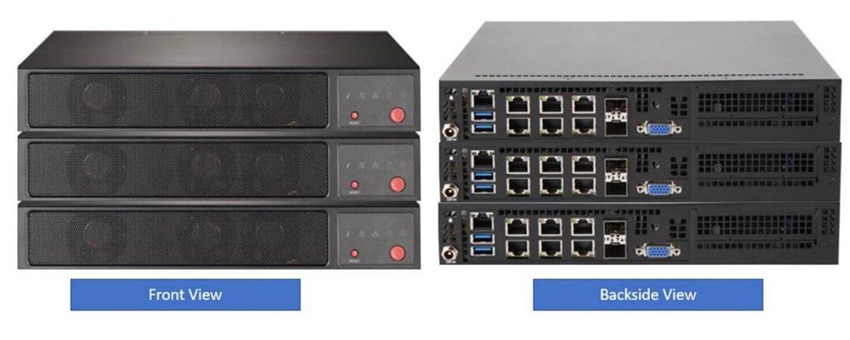VMware solves big issues. When one thinks of compact VMware it is usually in terms of a vSAN ReadyNode that is some form of rackmount server. There are instances where VMware can solve an issue but there is a need for minimal infrastructure. A Principal Systems Engineer and member of the Office of the CTO Global Field, Simon Richardson, saw these issues emerging for his retail customers and help develop the compact VMware solution in nanoEDGE.
VMware solves big issues. When one thinks of compact VMware it is usually in terms of a vSAN ReadyNode that is some form of rackmount server. There are instances where VMware can solve an issue but there is a need for minimal infrastructure. A Principal Systems Engineer and member of the Office of the CTO Global Field, Simon Richardson, saw these issues emerging for his retail customers and help develop the compact VMware solution in nanoEDGE.

Going to the cloud for edge or remote locations isn’t always feasible. While the cloud is almost always an option more and more workloads at the edge need more compute, storage, or even GPUs. Basically, there is a need for something like VMware SDDC at the edge but no room for it. Simon Richardson looked at the problem of how he would put the necessary infrastructure to run around 25 VMs or containers without the usual rack/rail requirements. Enter the nanoEDGE.
The nanoEDGE is a small form factor SDDC appliance that runs the full VMware vSphere, VMware vSAN, and VMware NSX in a low cost, small physical volume appliance. The nanoEDGE provides enough compute to run 25-50 VMs. The nanoEDGE is described as 2.5 servers: 2 servers provide vSAN and NSX and the third (0.5) server provides the vSAN Witness Appliance. This allows the solution to utilize 10GbE back to back connectivity for vSAN and vMotion traffic while keeping costs in check.
Ideal use cases include:
- Lack of local IT staff at remote sites results in increased service-level challenges for remote IT requests such as provisioning and configuration of servers, maintenance updates and troubleshooting.
- Inconsistent host configurations at remote sites complicate troubleshooting across multiple remote sites. Further, the remote nature of servers makes it more challenging to perform software upgrades and maintenance.
- Limited IT budgets makes it prohibitive to invest in specialized business continuity solutions or redundant hardware for remote sites, and affordable options (like tape backup) are error-prone, labor intensive to maintain, and susceptible to theft or loss.
- Limited space at remote sites poses challenges to accommodate new servers. In addition, the existing physical hosts at these sites are not efficiently utilized.
Currently the architecture of the nanoEDGE is combined together with Supermicro E300-9D that supports vSAN HCI.
Sign up for the StorageReview newsletter
